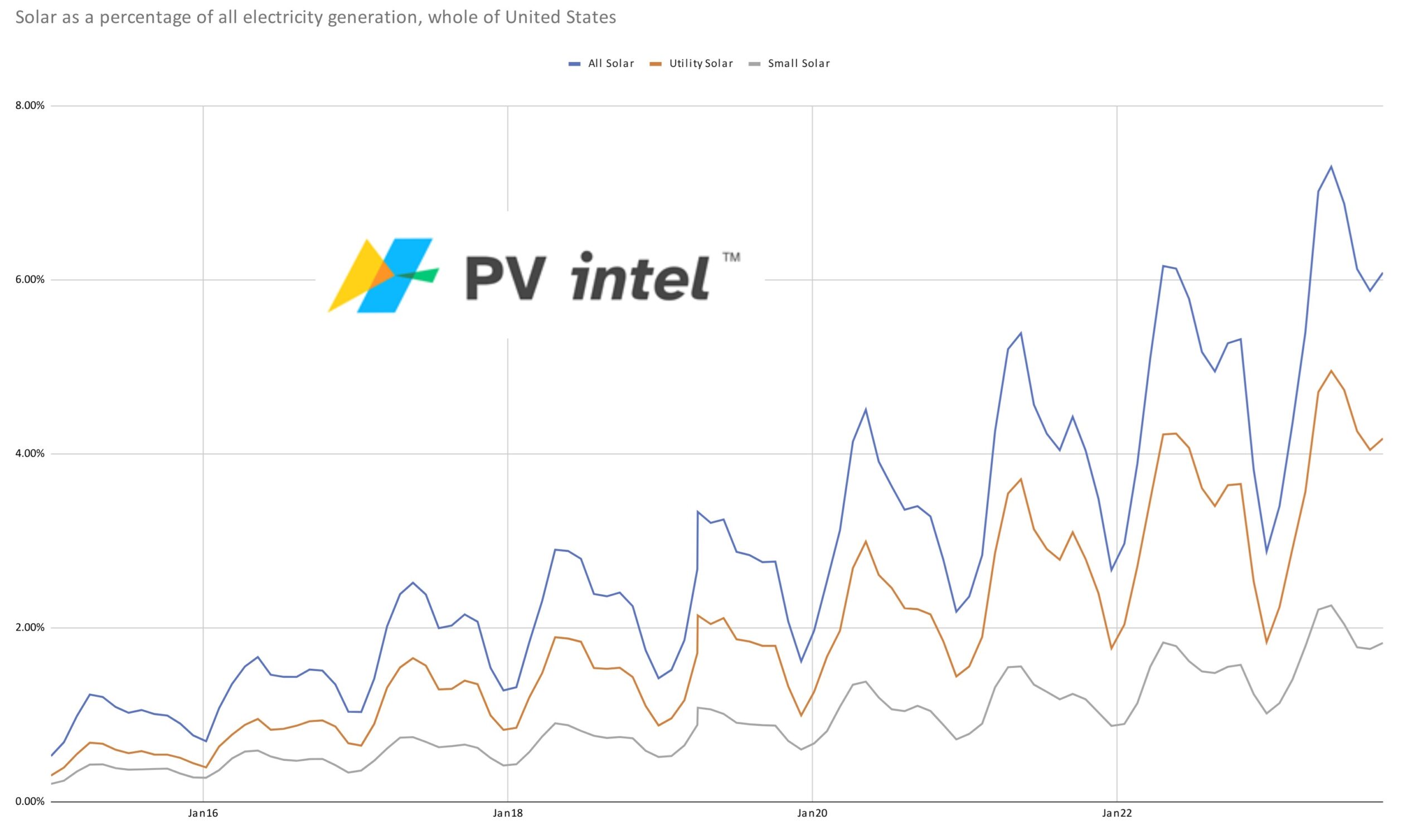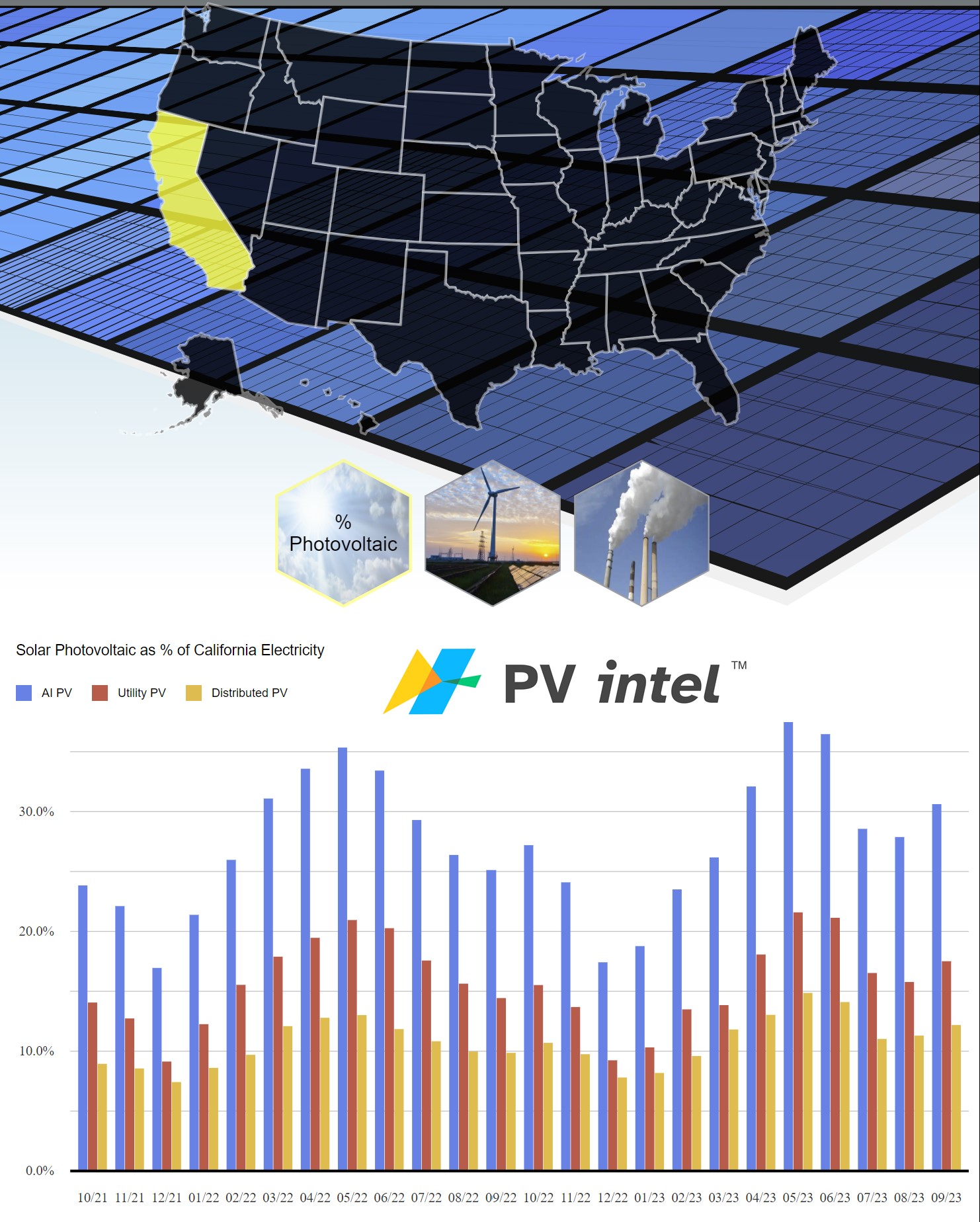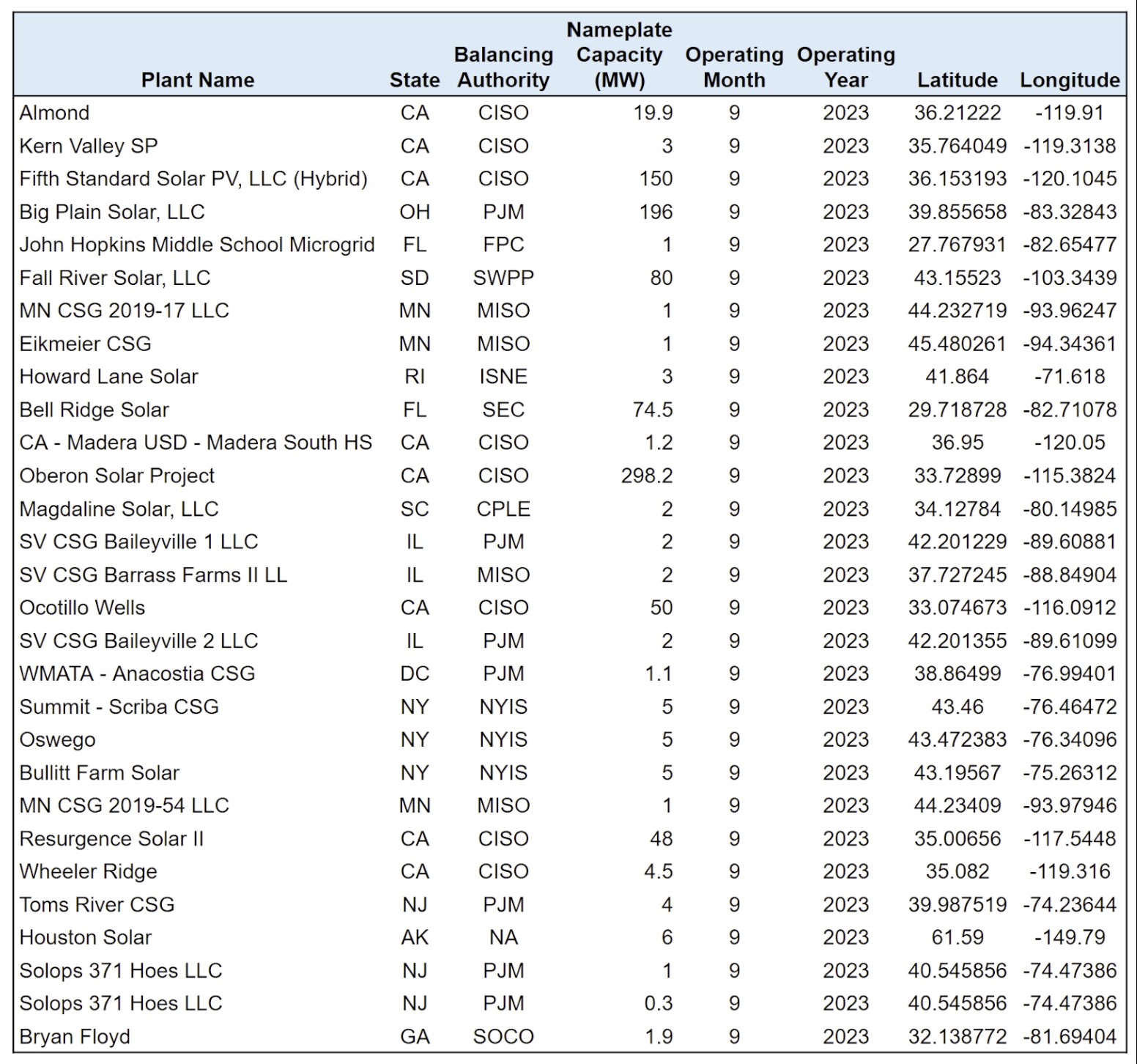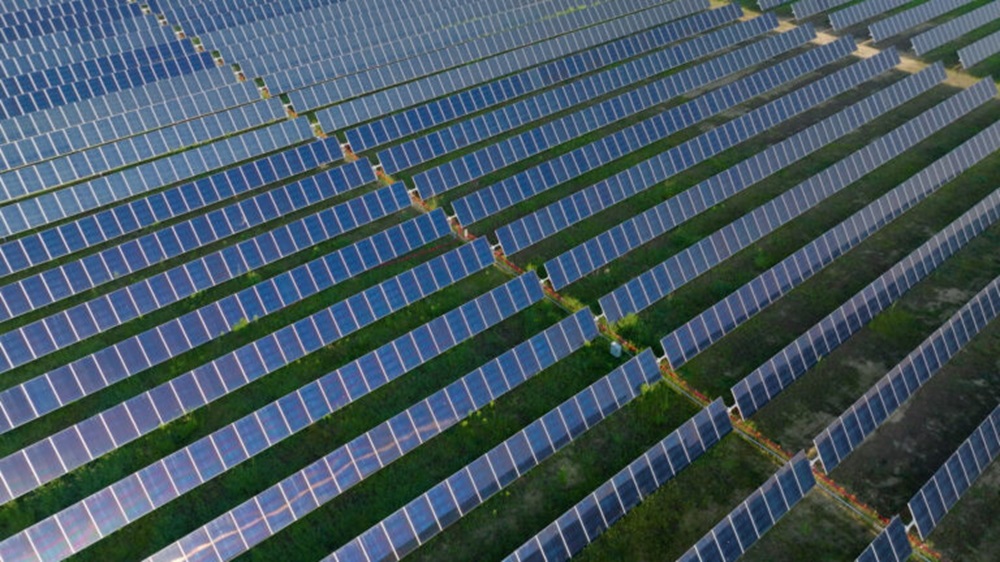The U.S. Department of Energy’s Energy Information Administration’s (EIA) has released its Electric Power Monthly report for the first three quarters of 2023. The data shows that solar growth is still recovering from lower installation volumes in 2022.
Data from PV Intel reveals that, up to September 2023, solar power constituted 5.7% of the electricity generated in the U.S. for the year, an increase from the 4.9% recorded at the same time last year. This represents 16% growth in solar power generation compared to the previous year.
In 2022, solar generation accounted for 4.7% of total U.S. electricity. Assuming a continued growth rate of 15% to 16%, the total for 2023 is projected to reach 5.4% to 5.46%.
Monthly data showed that solar electricity generation was 6.1% in July, 5.9% in August, and returned to 6.1% in September. The peak month for 2023 was May, with 7.3% of all electricity generated from solar.

A notable trend is the expected increase in growth percentages throughout the year. In 2023, the U.S. is on track to set a new deployment record, with recent projections suggesting 33 GW will be deployed. This new capacity will impact generation numbers later in the year as these facilities come online, and will significantly contribute to 2024’s generation capacity.
If the U.S. achieves the 33 GW deployment milestone, this would represent a 23% increase in total installed solar capacity from 2022. For context, the total installed solar capacity in 2022 was 141 GW, reflecting a 16.5% increase in the base installation capacity due to the addition of 20 GW.
Assuming electricity generation remains constant, a 23% increase in solar capacity could boost U.S. solar output to around 6.8% of all electricity in 2024. This would mark the first time solar energy achieves a full percentage point increase in national electricity generation within a single year.

In California, solar generation as a share of total electricity grew by 20%. Specifically, solar energy contributed to 25% of the state’s electricity in September of the previous year, and this figure rose to 30% in September 2023. This increase can be partially attributed to the milder temperatures in September 2023, which led to a reduced demand for electricity from other sources, contrasting with the higher demands during the record heatwaves of the previous year.
The EIA’s 860-M form, “Monthly Electric Generator Inventory,” reports that 97 utility-scale solar power facilities came online in the third quarter. Overall, 6.5 GW of capacity was deployed in the third quarter, setting a new record. In September alone, according to the EIA, 969 MWac of utility-scale facilities were installed.

This content is protected by copyright and may not be reused. If you want to cooperate with us and would like to reuse some of our content, please contact: editors@pv-magazine.com.









By submitting this form you agree to pv magazine using your data for the purposes of publishing your comment.
Your personal data will only be disclosed or otherwise transmitted to third parties for the purposes of spam filtering or if this is necessary for technical maintenance of the website. Any other transfer to third parties will not take place unless this is justified on the basis of applicable data protection regulations or if pv magazine is legally obliged to do so.
You may revoke this consent at any time with effect for the future, in which case your personal data will be deleted immediately. Otherwise, your data will be deleted if pv magazine has processed your request or the purpose of data storage is fulfilled.
Further information on data privacy can be found in our Data Protection Policy.